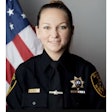Within the tactical community there's no doubt that the hottest topic is school terrorism. In the aftermath of several attacks against students at schools, there is much debate and second guessing as to whether SWAT teams have made the correct tactical responses to such incidents.
Experts disagree on the proper tactical response to school terrorism incidents. Some believe that the proper tactical response is to have first responders set up a perimeter and only engage immediate and direct threats. Others believe that first responders should immediately enter the school in an attempt to mitigate losses. The only thing that all experts agree upon is that there is no single correct way to respond to a school terrorism incident.
There has been much talk about SWAT teams having to come up with "unconventional" responses to school terrorism incidents. However, this talk is generally engaged in by people who are not familiar with tactical operations. The very essence of a SWAT operation is the "unconventional" response. That is why the name is "SPECIAL WEAPONS AND TACTICS." The fact that special tactics are employed by SWAT teams underscores the awareness of tactical officers that conventional approaches do not always work against sophisticated criminals and/or terrorists.
There was a time that a terrorist was perceived as a tough-looking, ruthless killer from a foreign country. Unfortunately, that narrow-sighted definition has been proven inadequate time and time again. Today, some of the worst terrorism incidents are carried out by the boy or girl next door, who appear to look and act no differently than anyone else. In fact, because the modern-day terrorist is often impossible to identify by physical or behavioral characteristics, warnings to law enforcement agencies are, at times, not followed up or taken seriously because a threat does not "appear" to exist or be real.
Compounding the problems in responding to a terrorist incident in a school is the fact that depending upon the size of a school you will encounter anywhere from 100 to 5,000 innocent victims (the students and faculty) who are potential targets and/or hostages. Additionally, depending on the size of the facility, you will encounter anywhere from 50 to 500 entrances and exists that have to be secured, watched or breached. (The typical school building has windows in every classroom and office). The obvious problems of deployment into large structures are exacerbated by the fact that the terrorists will often not be readily identifiable. Add to that the natural advantage that a suspect has when lying in wait and the inherent disadvantage that a tactical team has in searching for and apprehending such a suspect.
Unconventional responses do not mean untried, untested and unproven tactics. Unconventional responses mean unique ways of dealing with unique situations. There is no substitute for preparation and training. There is no substitute for being familiar with the facility that you may have to enter as part of a tactical response. There is no substitute for proper equipment. And finally, there is no substitute for proper planning and supervision.
Supervisory ineptitude and ignorance cannot be tolerated when engaging in a tactical response. It is essential that those in charge of a tactical response have the most up-to-date training available.
The only way that we can be thoroughly prepared to respond to school terrorism is to formulate various plans for a tactical response, train with these various plans and perfect all options and alternatives prior to the time when they will be needed.
Unfortunately, we will never be able to totally eliminate the possibility of school terrorism. Even the use of armed guards, metal detectors, searches and keeping all windows and doors locked, will never completely eliminate the possibility of a terrorist attack.
As long as there are criminals intent on terrorizing our society, SWAT teams must be prepared. SWAT leaders must continually anticipate every type of scenario that can occur in order to have a feasible tactical response. School terrorism is no exception. Unfortunately, school violence and terrorism are facts of life. Fortunately, SWAT teams are also a fact of life. It is our duty and obligation to be prepared to mount the most effective tactical response in order to protect the lives of our children if, God forbid, they should ever become victims of school terrorism.
Dan Kalk is a police officer with the Aurora (Ohio) Police Dept. and a legal advisor and police trainer for the Sagamore Hills (Ohio) Police Dept. Kalk holds law degrees from Cleveland State University and also holds Ohio Peace Officer Training Council Instructor Certification. The former SWAT team leader is a member of the Advisory Board for POLICE.








